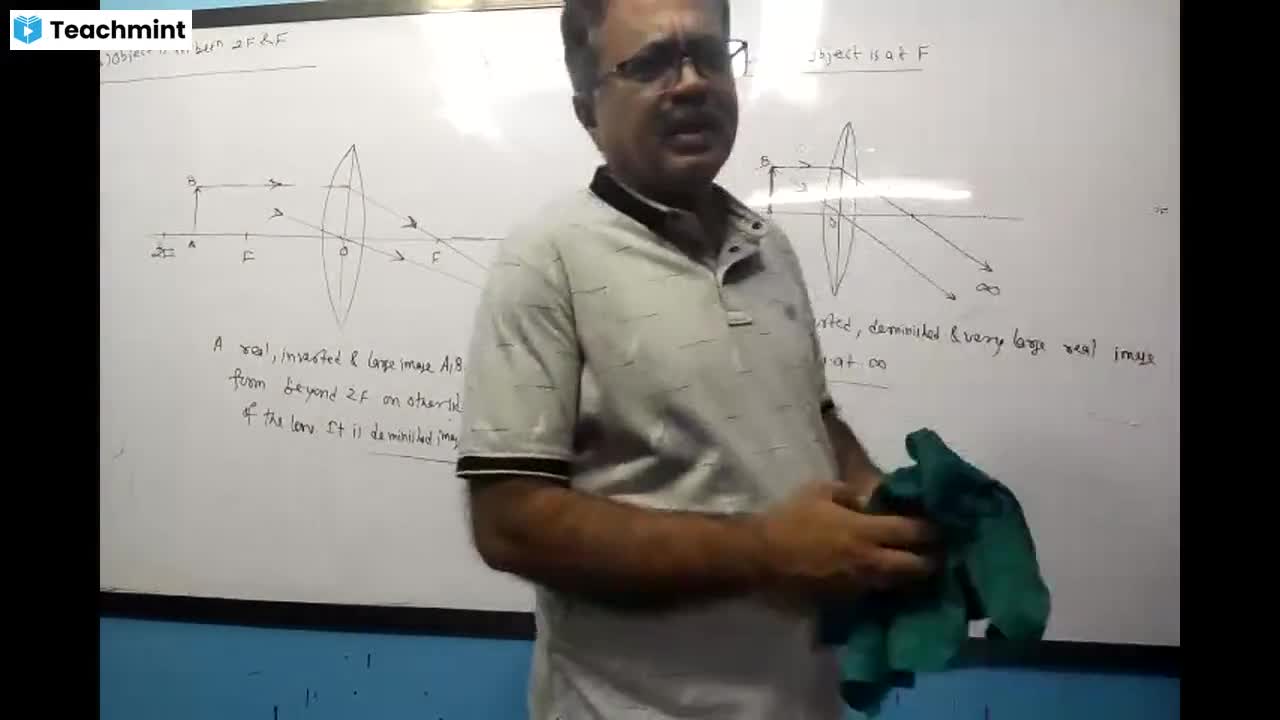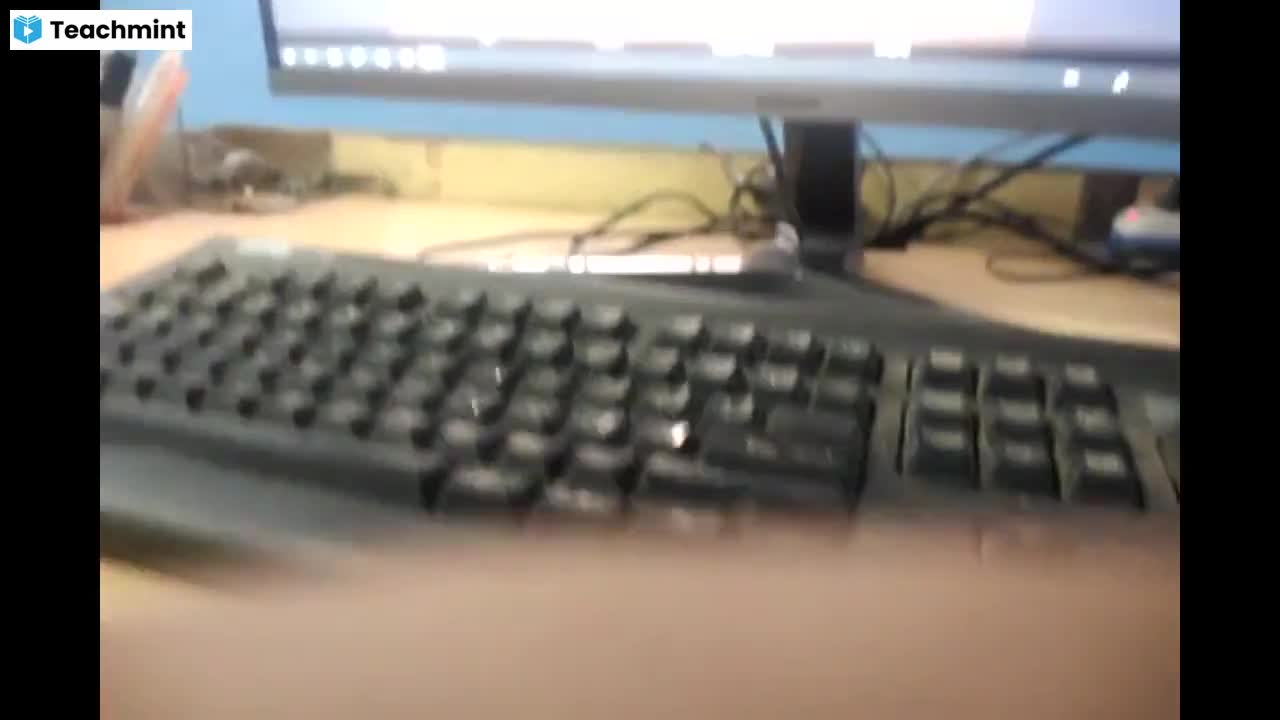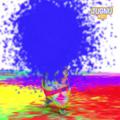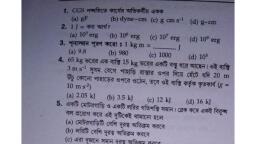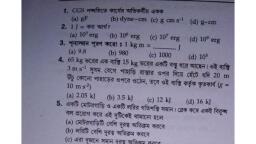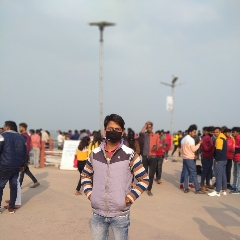Question 1 :
An object of mass 10 kg falls from rest through a vertical distance of 10 m and acquires a velocity of 10 m/s. The work done by the push of air on the object is (<em>g</em> = 10 m/s<sup>2</sup>)
Question 2 :
<font>The following data is obtained from a computer simulation for a patted baseball with mass 0.145 kg including air resistance. Find the work done by the air on the base ball as it moved from maximum height to back to its position </font> </p> <table width="308"> <tr> <td width="38"><p> <font>t (s)</font></p> </td> <td width="44"><p> <font>x(m)</font></p> </td> <td width="40"><p> <font>y(m)</font></p> </td> <td width="47"><p> <font>v<sub>x</sub>(ms<sup>-1</sup>)</font></p> </td> <td width="47"><p> <font>v<sub>y</sub>(ms<sup>-1</sup>)</font></p> </td> </tr> <tr> <td width="38"><p> <font>0</font></p> </td> <td width="44"><p> <font>0</font></p> </td> <td width="40"><p> <font>0</font></p> </td> <td width="47"><p> <font>30</font></p> </td> <td width="47"><p> <font>40</font></p> </td> </tr> <tr> <td width="38"><p> <font>3.05</font></p> </td> <td width="44"><p> <font>70.2</font></p> </td> <td width="40"><p> <font>53.6</font></p> </td> <td width="47"><p> <font>18.6</font></p> </td> <td width="47"><p> <font>0</font></p> </td> </tr> <tr> <td width="38"><p> <font>6.59</font></p> </td> <td width="44"><p> <font>124.4</font></p> </td> <td width="40"><p> <font>0</font></p> </td> <td width="47"><p> <font>12.0</font></p> </td> <td width="47"><p> <font>-30</font></p> </td> </tr> </table>
Question 3 :
A block of mass <em>m</em> is released from rest when the extension in the spring is <em>x</em><sub>0</sub>. The maximum downward displacement of the block is <br> <img style='object-fit:contain' style="max-width:240px;" src="https://storage.googleapis.com/teachmint/question_assets/JEE%20Main/5f16bfb4f1a5a149feab990b"/>
Question 4 :
Two identical spheres move in opposite directions with speeds v<sub>1</sub> and v<sub>2</sub> and pass behind an opaque screen, where they may either cross without touching (event 1) or make an elastic head-on collision (event 2) -<br>
Question 5 :
A spherical ball of mass 20kg is stationary at the top of a hill of height 100m. It rolls down a smooth surface to the ground, then climbs up another hill of height 30m and finally rolls down to a horizontal base at a height of 20m above the ground. The velocity attained by the ball is[2005]<br>
Question 6 :
Six identical uniform rods PQ, QR, RS, ST, TU and UP each weighing W are freely joined at their ends to form a hexagon. The rod PQ is fixed in a horizontal position and middle points of PQ and ST are connected by a vertical string. The tension in string is<br><img style='object-fit:contain' src='https://storage.googleapis.com/teachmint/question_assets/JEE%20Main/5e7d97e025bd3947928ed84f' height='134' width='163' ><br>
Question 7 :
A ball of mass 1 kg strikes a wedge of mass 4 kg horizontally with a velocity of 10 m/s. Just after collision, velocity of wedge becomes 4 m/s. Friction is absent everywhere and collision is elastic. Select the correct alternative - <br><img style='object-fit:contain' src='https://storage.googleapis.com/teachmint/question_assets/JEE%20Main/5e7d977b25bd3947928ed773' height='81' width='111' ><br>
Question 8 :
A light spring of length <em>l</em> and rigidity <em>k</em> is placed vertically on a table. A small ball of mass <em>m</em> falls on it from a vertical distance <em>y</em> above its free end. The height <em>h</em> from the surface of the table at which the ball will have the maximum velocity is
Question 9 :
A uniform chain of length <em>L</em> and mass <em>M</em> overhangs a horizontal table with its two third part on the table. The friction coefficient between the table and the chain is <font face="Symbol">µ</font>. The work done by the friction during the period the chain slips off the table is
Question 10 :
<font>Two spheres of masses m and M are situated in air and the gravitational force between them is F. The space around the masses is now filled with a liquid of specific gravity 3. The gravitational force will now be -</font></p>
Question 11 :
<font>A ball leaves a horizontal table with velocity v</font><sub><font>0</font></sub><font> = 5 m/s. The ball bounces elastically from a vertical wall at a horizontal distance D (= 8m) from the table, as shown in figure. The ball then strikes the floor a distance x</font><sub><font>0</font></sub><font> from the table (g = 10 m/s</font><sup><font>2</font></sup><font>). The value of x</font><sub><font>0</font></sub><font> is -</font></p> <p> <img style='object-fit:contain' align="bottom" height="126" src="https://storage.googleapis.com/teachmint/question_assets/JEE%20Main/5fc0efbbe6377b2e815f4e48" width="134"/> </p>
Question 12 :
<font>One sphere collides with another sphere of same mass at rest inelastically. If the value of coefficient of restitution is </font> <img style='object-fit:contain' align="bottom" height="36" src="https://storage.googleapis.com/teachmint/question_assets/JEE%20Main/5fc0f5193e65343a882862b9" width="13"/> <font>, the ratio of their speeds after collision shall be</font></p>
Question 13 :
<font>A particle free to move along x axis has potential energy given as U</font><sub><font>(x)</font></sub><font> = k (1 - exp (-x</font><sup><font>2</font></sup><font>)] for - a ≤ x ≤ + </font><font face="Symbol, serif"><font></font></font><font>where k is a positive constant of appropriate dimensions. Then</font></p>
Question 14 :
<font>A man squatting on the ground gets straight up and stands. The force of reaction of ground on the man during the process is.</font></p>
Question 15 :
<font>Water is flowing in a river at </font> <img style='object-fit:contain' align="bottom" height="25" src="https://storage.googleapis.com/teachmint/question_assets/JEE%20Main/5fc0f18ca89a512aab212a12" width="43"/> <font>. The river is 50 m wide and has an average depth of 5 m. The power available from the current in the river is:</font></p> <p align="justify"> <font>(Density of water = 1000 kg m</font><sup><font>-3</font></sup><sup><font>-3</font></sup><font>)</font></p>
Question 16 :
<font>A pump having efficiency 75% lifts 800 kg water per minute from a 14 m deep well and throws at a speed of 18 ms</font><sup><font>-1</font></sup><font>. Find the power of the pump.</font></p>
Question 17 :
<font>A body of mass m moves in a horizontal circle of radius r at constant speed v. Which pair of values correctly gives (i) the work done by the centripetal force, (ii) the change in linear momentum of the body, when it moves from X to Y (where XY is a diameter)? </font> </p> <p> <img style='object-fit:contain' align="bottom" height="88" src="https://storage.googleapis.com/teachmint/question_assets/JEE%20Main/5fc0ef7fa00b633c04f39e75" width="106"/> </p> <p align="justify"> <font>(i) Work done (ii) Charge in linear momentum</font></p>
Question 18 :
<font>A brick of mass 1.8 kg is kept on a spring of spring constant K = 490 N m</font><sup><font>-1</font></sup><font>. The spring is compressed so that after the release brick rises to 3.6 m. Find the compression in the spring.</font></p>
Question 19 :
<font>A cord is used to lower vertically a block of mass M a distance d at a constant downward acceleration of g/4. Then the work done by the cord on the block is -</font></p>
Question 20 :
<font>A particle moves with a velocity </font> <img style='object-fit:contain' align="bottom" height="29" src="https://storage.googleapis.com/teachmint/question_assets/JEE%20Main/5fc0f5cd3e65343a88286387" width="87"/> <font>ms</font><sup><font>-1</font></sup><font> under the influence of a constant force </font> <img style='object-fit:contain' align="bottom" height="29" src="https://storage.googleapis.com/teachmint/question_assets/JEE%20Main/5fc0f5cea89a512aab212fc8" width="107"/> <font>N. The instantaneous power applied to the particle is -</font></p>

